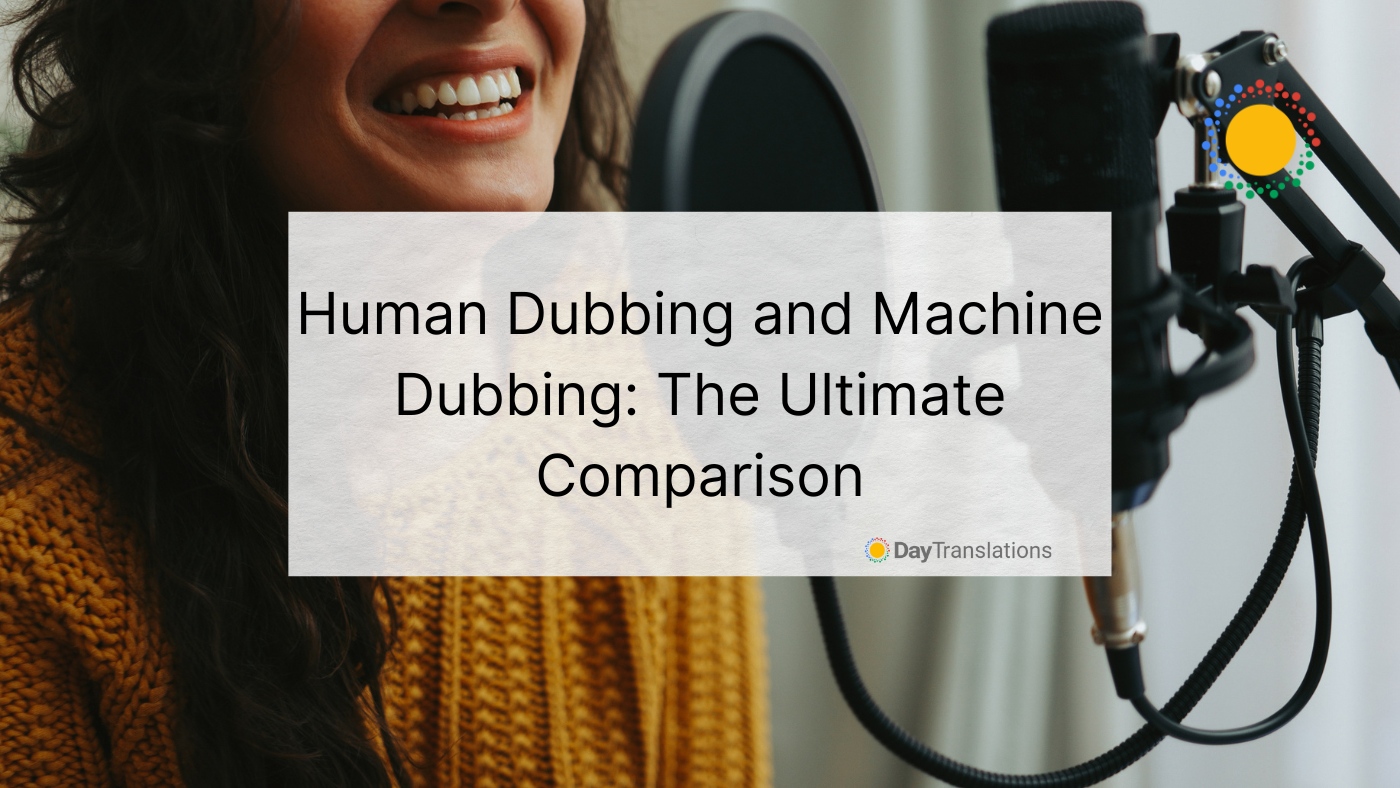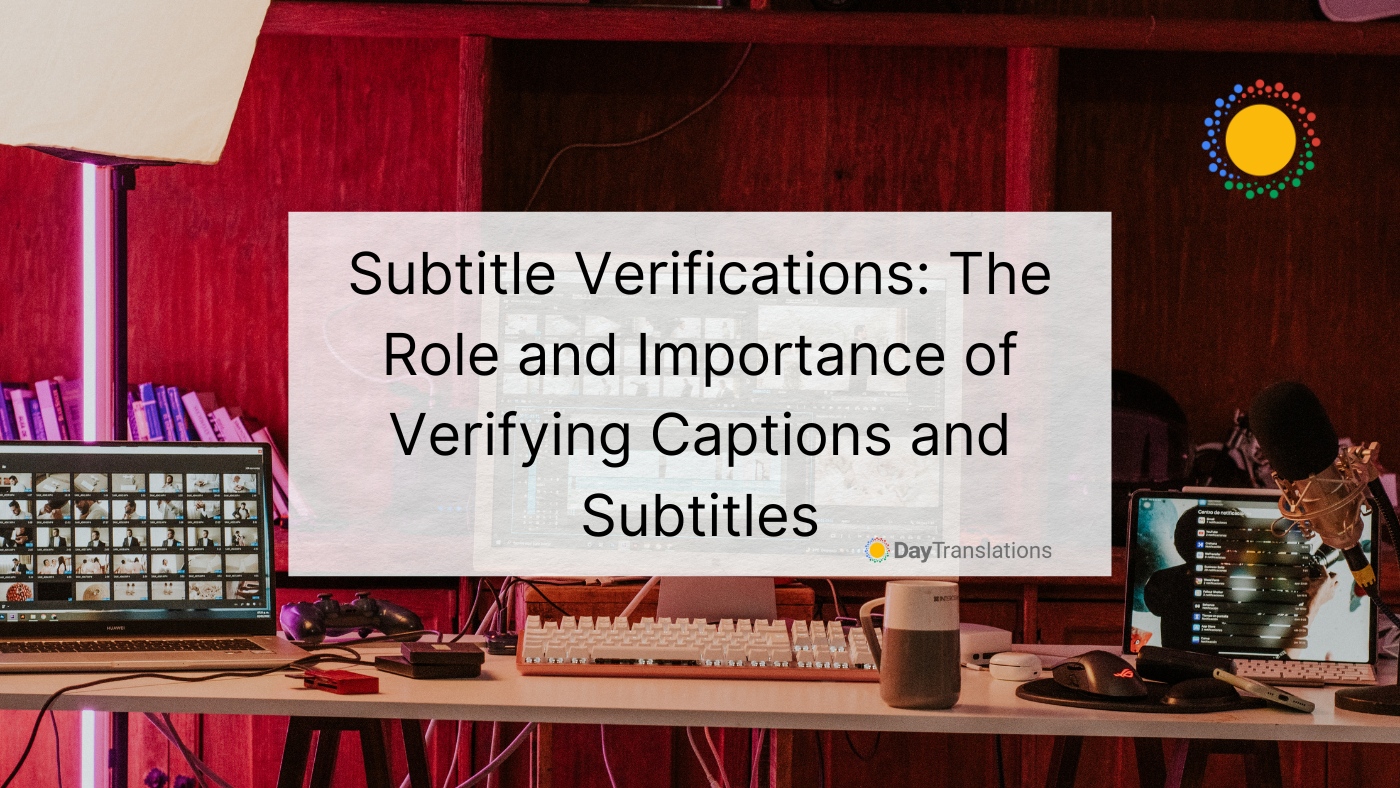Dubbing is an integral part of the media industry, allowing films, TV shows, and other forms of entertainment to reach a global audience by translating dialogue into different languages. The dubbing process involves replacing the original audio with a new recording that matches the lip movements of the actors on screen. But when it comes to human dubbing and machine dubbing, which option is better?
Traditionally, human voice talent has been the go-to choice for dubbing, but with recent technological advancements, machine dubbing has become increasingly popular. In this article, we will explore the advantages and disadvantages of both options of dubbing and compare their costs, quality, turnaround time, emotional impact, and naturalness. By the end of this article, you will better understand which method best fits your media project.
The Importance of Dubbing in the Media Industry
Dubbing is an essential component of the media industry because it enables audiovisual content to be translated into different languages, making it accessible to a broader audience worldwide. In a world where people speak thousands of other languages, dubbing plays a vital role in breaking down language barriers and facilitating cross-cultural communication.
Dubbing is particularly important in the film and television industry, where it is used to make foreign films and TV shows accessible to audiences in different countries. With dubbing, many people can enjoy and appreciate the diverse range of worldwide films and TV shows. Dubbing also allows for creating localized versions of content, adapting language and cultural references to suit the target audience’s preferences.
Moreover, dubbing has become essential for the entertainment industry to increase revenue streams by tapping into new markets. By dubbing their content, production companies can sell it to new audiences, expanding their audience reach and revenue potential.
Overall, dubbing is a critical part of the media industry that enables content creators to share their stories and connect with audiences worldwide, regardless of their native language.
A Brief Overview of Human Dubbing and Machine Dubbing
The human dubbing process is the traditional method of replacing dialogue in audiovisual content with a new recording performed by a voice actor who matches the lip movements of the original actor on screen. The process involves hiring a voice actor who is fluent in the target language and can accurately convey the nuances and emotions of the original performance. The voice actor performs the lines in a recording studio, syncing the audio with the video.
Machine dubbing (sometimes referred to as automatic dubbing or synthetic dubbing) is a relatively new technology that uses artificial intelligence and text-to-speech software to create a dubbed version of audiovisual content. The process involves inputting the original audio and script into a computer program, using a synthetic voice to generate a new audio track. The output is then synced with the video, resulting in a dubbed version of the original content.
It’s even possible to use a text-to-speech tool to deliver engaging content from scratch, which is useful if you don’t have the means or skills to capture recordings locally. This is a brave new era for the dubbing scene, and it seems that automation is set to shake things up significantly.
While dubbing done by voice specialists has been the traditional choice for dubbing, automatic dubbing has gained popularity due to its cost-effectiveness, faster turnaround time, and ability to produce multiple language versions simultaneously. However, automatic dubbing has limitations, particularly in terms of naturalness and the ability to accurately convey emotions and nuances.
In summary, a human dubbing process involves using professional voice-over artists to create a dubbed version of audiovisual content. In contrast, automatic dubbing uses artificial intelligence and text-to-speech software to automate the process.
Advantages of Human Dubbing
High-Quality Output
Human dubs can produce high-quality output that accurately conveys the emotions and nuances of the original performance.
Natural Sounding Voice
Human voice actors can use their training and experience to create a natural-sounding voice that matches the original performance.
Ability to Convey Emotions and Nuances
Human voice actors have the ability to convey emotions and nuances that may be lost in machine dubbing, making the dubbed version more authentic and engaging. The more authentic the end result, the higher the translation quality.
Disadvantages of Human Dubbing
Time-Consuming
Human dubs can be time-consuming, involving multiple recording sessions and post-production work.
Expensive
Hiring professional voice actors for human dubs can be expensive, particularly for larger projects with multiple languages.
Availability of Qualified Voice Actors
A limited pool of qualified voice actors in specific languages may make it challenging to find the right talent for a dubbing project.
Overall, human dubbing is a traditional method of dubbing that produces high-quality, natural-sounding output but can be time-consuming and expensive. The availability of qualified voice actors may also be challenging in certain languages.
Advantages of Machine Dubbing
Cost-Effective
Automatic dubbing is often more cost-effective than dubbing performed by humans, particularly for larger projects with multiple languages.
Faster Turnaround Time
Automatic dubbing can produce dubbed versions of content faster than dubbing done by people, allowing for quicker release to target audiences.
Consistency
Automatic dubbing can provide consistency in tone and pronunciation, ensuring that the dubbed versions are uniform across different languages.
Disadvantages of Machine Dubbing:
Lack of Naturalness in the Translation Quality
Automatic dubbing can sound robotic and lack the naturalness and nuance of human voices, making the dubbed version less engaging and authentic. The use of synthetic voices in machine translation and automatic dubbing can also impact translation accuracy of subtitles.
Inaccurate Pronunciation
Automatic dubbing may struggle with accurately pronouncing certain words, particularly names or words with unique pronunciations.
Limited Emotional Range
Automatic dubbing may struggle with conveying emotions accurately, which can impact the viewer’s engagement with the dubbed version.
Overall, machine dubbing is a more cost-effective and faster method of dubbing but may need more naturalness and nuance than dubbing done by humans. Automatic dubbing may also need help with accurate pronunciation and conveying emotions (to preserve speech characteristics), impacting viewer engagement.
Exploring the Comparison and Contrast of Human Dubbing and Machine Dubbing
Human and machine dubbing creates a dubbed version of audiovisual content in a target language. Both methods require the original audio to be replaced with a new recording that matches the lip movements of the original actors. Both methods aim to make the dubbed content sound as natural as possible and preserve speech characteristics.
Overall, both forms of dubbing have advantages and disadvantages, and the choice between them depends on the project’s specific requirements. Human dubbing is often preferred for projects that require high translation quality and emotional nuance, while machine dubbing is suitable for larger projects with multiple languages and faster turnaround times.
Wrapping Up
In conclusion, human and machine dubbing methods have advantages and disadvantages, and the choice between them depends on the project’s specific requirements. Human dubbing offers high-quality output, emotional nuance, and unique cultural adaptations, but it can be time-consuming and expensive.
On the other hand, machine dubbing is cost-effective and provides a faster turnaround time. Still, it may need more naturalness and nuance and need help with accurate pronunciation and cultural adaptation. Ultimately, choosing between human and machine dubbing should be based on factors such as budget, project requirements, language availability, and the target audience’s preferences.
Regardless of the method used, dubbing aims to provide a seamless viewing experience to audiences who need to speak the content’s original language and promote cultural exchange and understanding.












Sorry, the comment form is closed at this time.